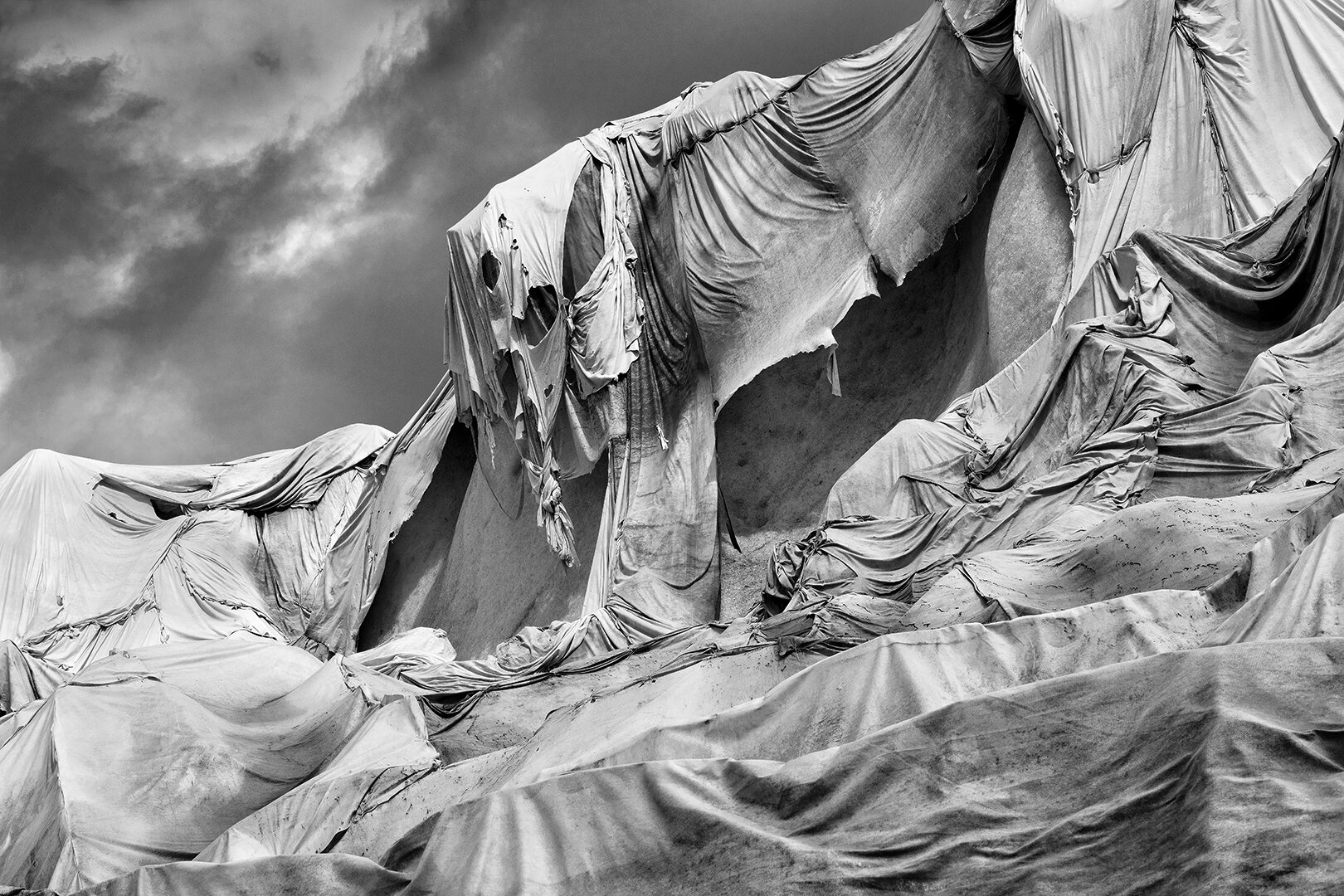Module 1 / Topic 10: Photography, Power & Others
The unspoken power in an image is often palpable without context or words
It is ironic that I have found myself in a 180-degree shift of topics and landed from my past work in the ice, to a current hotbed of political, legal and ecological wrangling in the Southern Vancouver Island Rainforest. I arrived in Victoria, BC, quite unexpectedly needing to be here for the remainder of my youngest child’s school year. At the same time I was trying to figure out how I was going to possibly document anything to do with ice for my next project due imminently – The Illustrated Proposal. Literally within 24 hours of my arrival, I discovered that the Southern Vancouver Island Rainforest and its old growth trees are at risk of being clear cut logged and was currently an active protest zone with a legal injunction application pending a Supreme Court decision. Additionally, I learnt the gravity of the situation is that of the 2.7% of old growth forest remaining in BC (the 97.3% has already been logged), less than 1% of it remains on Vancouver Island and this area is on unceded First Nations Land that has been illegally appropriated by the government. This week’s topic is the issue of photography, power & others.
Old Growth Forest near Eden Grove, Southern Vancouver Island Rainforest
1000 Year Old Tree Stumps in Clear Cut
This topic brought together all of my academic studies from Political Science, to Law and finally Photography allowing me to cover something happening in this unfortunate historic moment. My work as an environmental photographer has always been initiated by my desire to be part of the solution and not part of the problem, and Berger who states ‘We never look at just one thing, we are always looking at the relation between things and ourselves’ poignantly sums this up. (Berger, 1972:9 Ways of Seeing. London: Penguin)
Fairy Creek Forest Protectors at their Headquarters nine months into the stand off
In looking at the issues of power, photography and others, it is essential to address ethical issues that explore the relationships between the author, the subject and the audience. In photographing the rainforest in the midst of a conflict with loggers, politicians, the local First Nations community and environmentalists, the issue becomes a quagmire of ethics relating to how the images are being used, obtaining consent from the vulnerable and minors, and the perspective of the story being told. I, the author, ultimately want to photograph the forest that is at risk of being logged, and to capture areas that have been already logged. But in telling the story of the forest, it is essential for me to capture what is currently happening in the name of its protection and that is the very politically charged situation between the above groups who are the subjects, and convey with accuracy the reality of current events so its veracity can be authenticated.
Forest Protectors at Caycuse
There were people on the blockades who did not want to be identified therefore I could not photograph them. As well, there was some infrastructure built that the environmentalists did not want the public to be aware of as it was within their arsenal of strategies in dealing with the police in the event the time came to forcibly remove them. Exploring the relationship between each corner of the ‘Author, Subject, Audience Triangle’, it is essential that not too much power be weighted in one quadrant to the exclusion of the others. As Sontag states in her book On Photography,
‘To photograph people is to violate them, by seeing them as they can never see themselves, by having knowledge of them they can never have; it turns people into objects that can be symbolically possessed.’ (Sontag, 1979:14)
The first arrests of peaceful forest protectors
While it is true that there is an element of power one wields behind the lens in terms of the subject in focus, once the photo enters the public domain, it is the audience who yields the power in its interpretation. Additionally, in the situation of my photographing the environmentalists on the blockades, there was most definitely a feeling that they were asserting their power in protecting the old growth forests, and even to the point of being arresting in making their positions known. But the arrival of the police changed the dynamics of the power and reverted to the colonialist paradigm shift in Canada’s historic abuse of power over indigenous groups and the land.
78 year old grandmother being arrested
I was photographing in the forest in two capacities, one as a photojournalist for a magazine and secondly, as an MA student creating content for my project. Each reason created different objectives and the resulting photographs are different. But each task is imprinted with my photographic DNA, my own agenda and style regardless of how objective I am attempting to be. But at the root of my practice, whether it is for my own creative objectives or for photojournalism purposes, the issue of ethics and power is always one I try to balance and I hope that my work conveys this.
Police assessing how to remove blockade



























